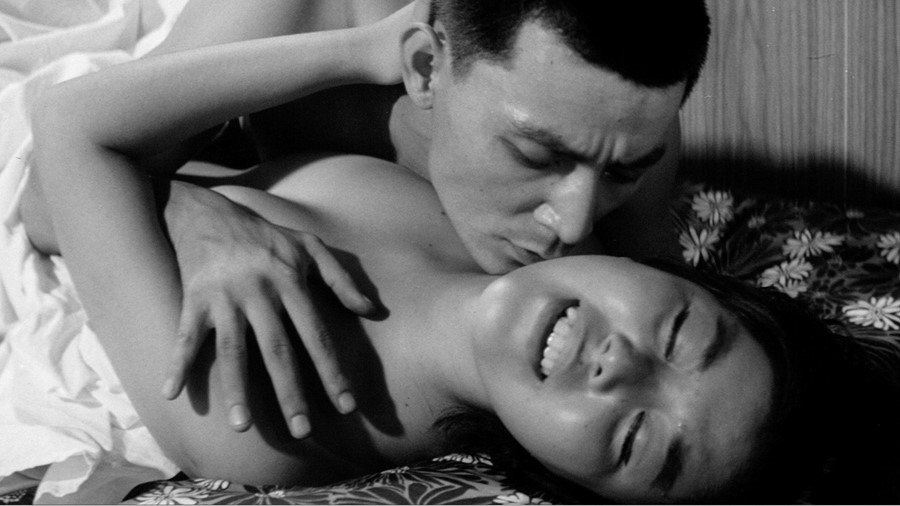James Balmont shares five movies that prove Japan is one of the most vibrant and unpredictable film industries on the planet
Whether it’s Last Tango in Paris or Debbie Does Dallas that better tickles your fancy, chances are you don’t need to be told: when it comes to films, sex (usually) sells.
We’ve seen it in the early 90s erotic invasion of Hollywood, where Palme d’Or-winning Sex, Lies and Videotape and dubious cult classic Showgirls became staples of pop culture. It’s been the zenith of international arthouse via Y tu mamá también and Blue Is The Warmest Colour. And it’s been a relentless focus of one of Europe’s most lauded cinematic agitators, with The Idiots, Antichrist and Nymphomaniac Volume I & II released by Lars von Trier.
But Japan’s relationship with erotic cinema is more unique – something explored this month by MUBI in a season spotlighting the pinku eiga (“pink film”) phenomenon of the 60s. These erotic, low-budget indie features offered something racier than the major studios would dare. And while their sexual content pales in comparison to today’s super-charged definition, this kinky sub-genre screening in adult-only cinemas would be a revelation at a time where theatre attendance had nosedived in the face of home television.
While “pink film” refers explicitly to Japan’s then-booming indie sub-industry, a wider erotic cinema explosion would soon climax into the mainstream off the back of it. And in a country with such a rich cinematic heritage as Japan, it’s little surprise to learn that erotic cinema has since provided some of their most creative original works over the decades.
From women-in-prison films of the 70s to postmodern works by Shinya Tsukamoto and Sion Sono after the turn of the century, erotic Japanese cinema is a genre that keeps on evolving. Even the smash Netflix series The Naked Director – which chronicles the story of the country’s real-life “emperor of porn” in the 80s – puts an engaging new spin on the subject.
Sexualised cinema continues to mark out Japan as one of the most vibrant and unpredictable film industries on the planet: here are five films that prove it.
Inflatable Sex Doll of the Wastelands, 1967 (lead image)
A brooding example of the ambidextrous nature of the 60s pink film industry can be observed in this recently-restored noir, which mixes guns, cigarettes and cheaply perfumed “whores” with a seamless assortment of vibrant sexual interludes.
From a modern-day perspective there’s not much to suggest that this is anything other than an artfully-shot crime flick. The tone is bleak, the characters are ambiguous, and a familiar plot concerning a gun-wielding mercenary on the hunt for a kidnapped damsel takes precedent over the ancillary sexual content. But therein lies the value of the pink film format: anything goes as long as there’s a bit of sex to draw people in.
Evidently, the filmmakers decided that the film’s low-budget limitations put the onus on them to use their imagination – and the results are fascinating. Delirious flashbacks to a dustbowl wasteland contrast with the monochrome streets of downtown Tokyo – and it is these images that stay with the viewer on this surreal journey into Japan’s seedy underworld.
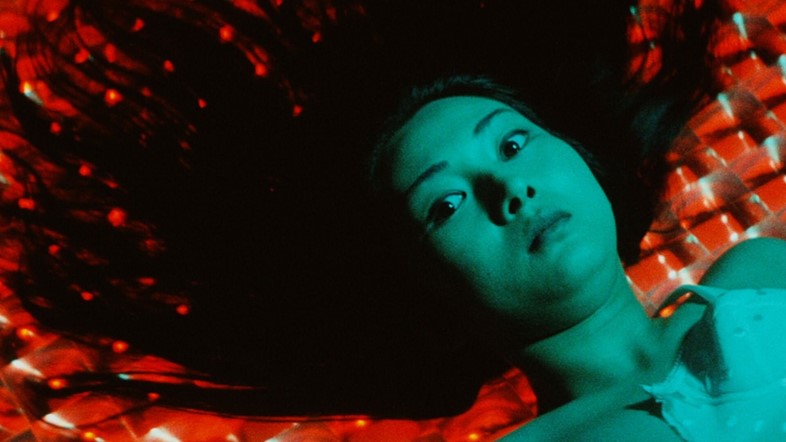
Female Prisoner #701: Scorpion, 1972
While box office returns plummeting, Japanese cinema would undergo significant changes as major studios faced bankruptcy in the late 60s. Nikkatsu studio began exclusively producing adult-themed films in the early 70s under the ‘Roman Porno’ label to pry back audiences from newly-popular adult cinemas. And rivals Toei, too, would be forced to undergo their own metamorphoses in order to compete with changing demands.
Formerly known for superhero productions like Planet Prince and Invasion of the Nepture Men, Toei of the 70s became synonymous with films involving scantily clad women coming up against male oppressors. Arguably the apex of these “pinky violence” movies was the Female Prisoner #701 series, a collection of racy, quickly-produced women-in-prison action films starring Meiko Kaji as a defiant protagonist fighting back against malicious prison guards and a nefarious ex-lover.
The series made Kaji a star, and in her brief but impactful film career, she would cement her status as a prototypical action icon with such cult classics as Blind Woman’s Curse and Lady Snowblood – the latter a considerable influence on Quentin Tarantino’s Kill Bill.
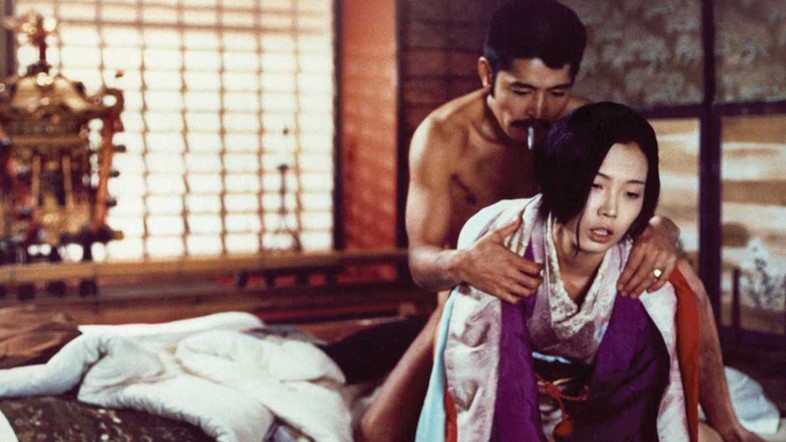
In the Realm of the Senses, 1976
Banned upon release in the States due to its explicit depictions of sex, and heavily censored in Japan to this day, Nagisa Ōshima’s 1976 arthouse classic In the Realm of the Senses remains one of the most stunning and controversial visions of erotica ever put to film.
Based on the true story of Sada Abe – a geisha and prostitute who killed her love via erotic asphyxiation in 1936, and who was later convicted of murder and mutilation of a corpse – this striking film opens with a reserved lesbian love-making scene and gets progressively more debauched from thereon.
For a country that drew the line before even showing pubic hair when it came to censorship, In the Realm of the Senses was the ultimate taboo in Japan in 1976. Featuring images of both the male and female genitalia – and numerous unsimulated sex scenes – the film’s graphic content resulted in director Ōshima being charged with obscenity upon release (he was eventually acquitted).
The film would ultimately become one of the most widely-seen Japanese works in the west to bridge the mediums of art film and pornography. A decidedly less explicit companion film was then released by Ōshima two years later, and for Empire of Passion the highly regarded filmmaker – later known for his David Bowie-led war film Merry Christmas Mr. Lawrence – received the best director award at Cannes.
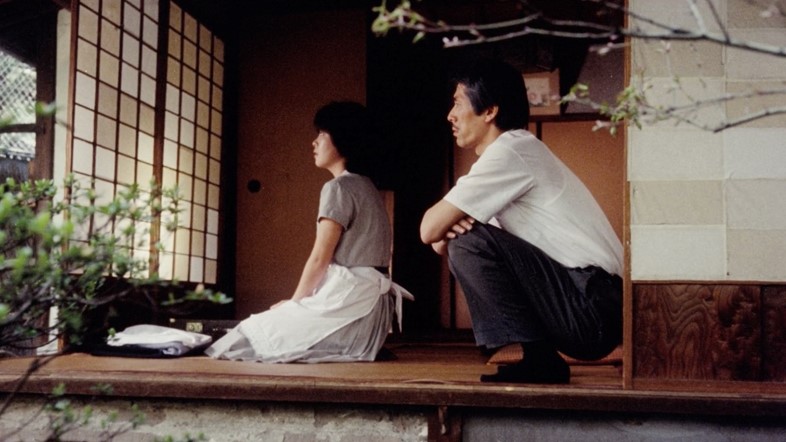
Abnormal Family, 1984
The 80s would prove a difficult period for both filmmakers and studios, as the advent of home video impacted the box office and studio budgets significantly. Even some of the biggest names in cinema were forced to seek funding from abroad; new filmmakers hoping to breakthrough, meanwhile, would find their opportunities limited.
The still-active independent pink film industry, then, would become a kind of filmmaking gauntlet through which serious directors took their first steps towards fruitful careers in more traditional cinema. Kiyoshi Kurosawa – a master horror filmmaker by the turn of the century, and the recipient of the Silver Lion award for Best Director at Venice 2020 for Wife of a Spy, is one of many such creators who started out on the more sordid side of the industry.
Masayuki Suo’s erotic debut Abnormal Family exemplifies how talented filmmakers could demonstrate their creativity in this field before graduating into mainstream cinema. The 60-minute film – starring a young Ren Osugi (Hana-bi, The Twilight Samurai), later one of the most recognisable actors of the 90s – would draw on Japan’s rich cinematic heritage by pastiching the works of one of the country’s greatest directors: Yasujiro Ozu.
With vivid colour photography and exquisite set design, Suo’s tale of lacey lingerie, rope-binding and sex takes place in the world of a delicate family drama a la Tokyo Story, with Ozu-style shots expertly pastiched in a brilliant subversion of classic cinema.
It would be Suo’s only pink film. Barely a decade later, he’d have two Japanese Academy Awards to his name for his work as a mainstream filmmaker.
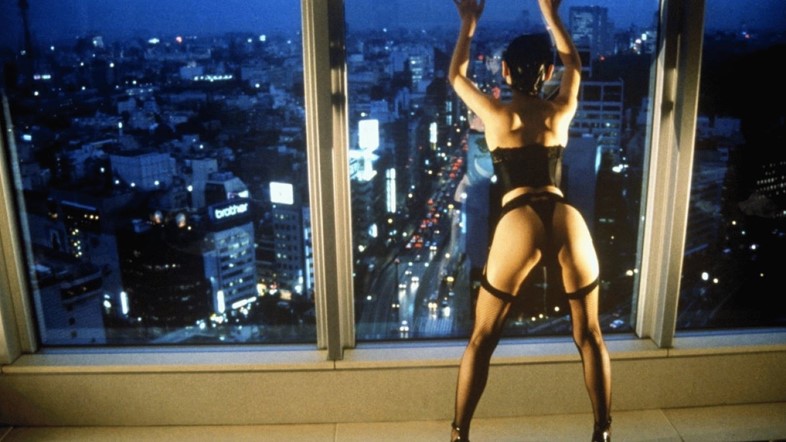
Tokyo Decadence, 1992
By the 90s, erotic cinema had grown into something far more explicit and sensational as hardcore pornography became widespread via home video and print magazines. And yet this 1992 drama, about a demure call girl navigating a nightmarish world of drugs, S&M and depravity, feels far ahead of its time due to its dark tone and confrontational portrayal of sex.
Written and directed by author Ryo Murakami (best known for penning the book behind Takashi Miike’s Audition), and featuring a soundtrack by Oscar-winning composer Ryuichi Sakamoto (The Last Emperor, The Revenant), this low-budget flick bares much in common with the early pink films despite the superfluous crew attached. It also notably features Yayoi Kusama in a cameo – with the Infinity Mirror Rooms artist playing a fortune teller offering the escort protagonist Ai cryptic advice in her search for inner satisfaction.
That search is, in the truest sense, what is at the core of this vivid and provocative exploration of the murky corners of the high-end sex biz. And though the spiritual journey is only implicit (especially when compared to the myriad scenes of perverse sexual transactions – which earned the film a ban in countries like Australia and South Korea), there is a vital study at the heart of it, of the precarious nature of sex work and the vulnerable people within that world.
